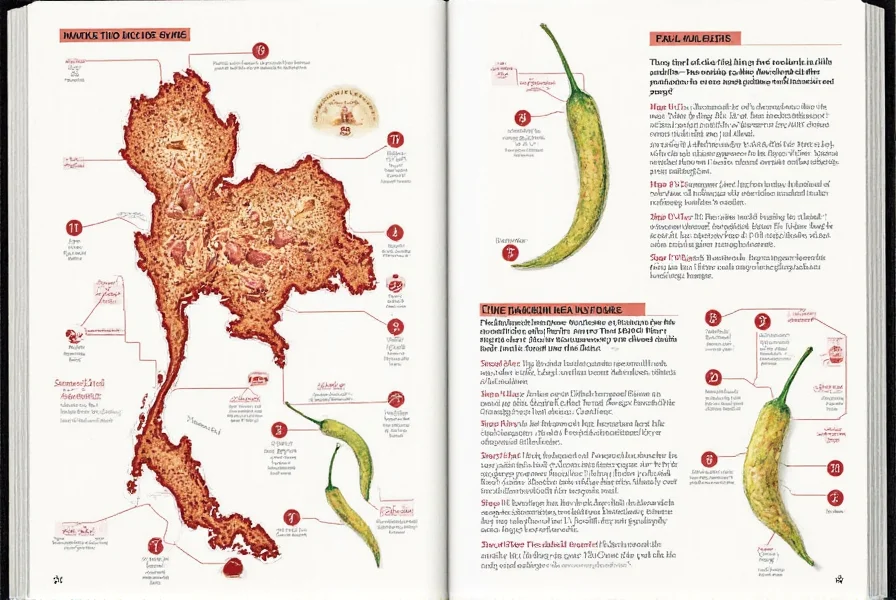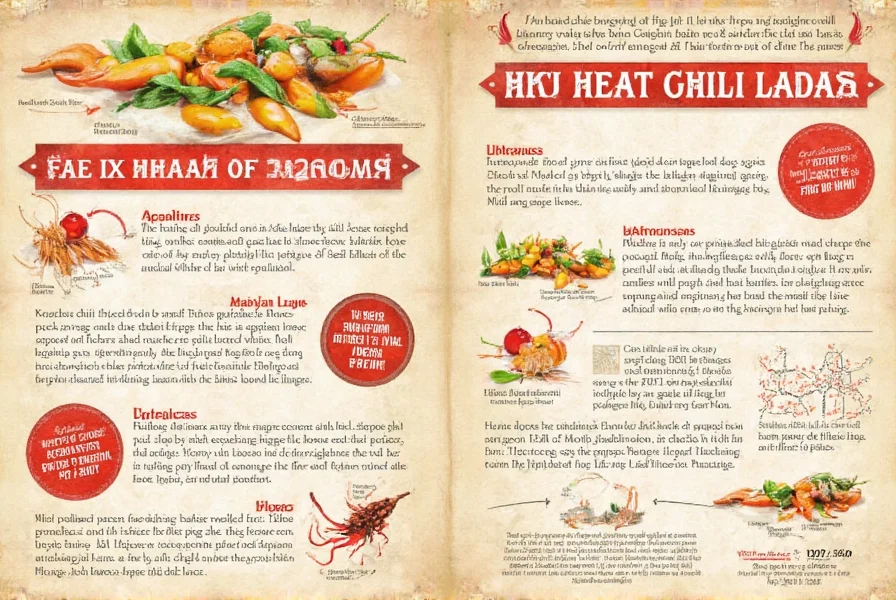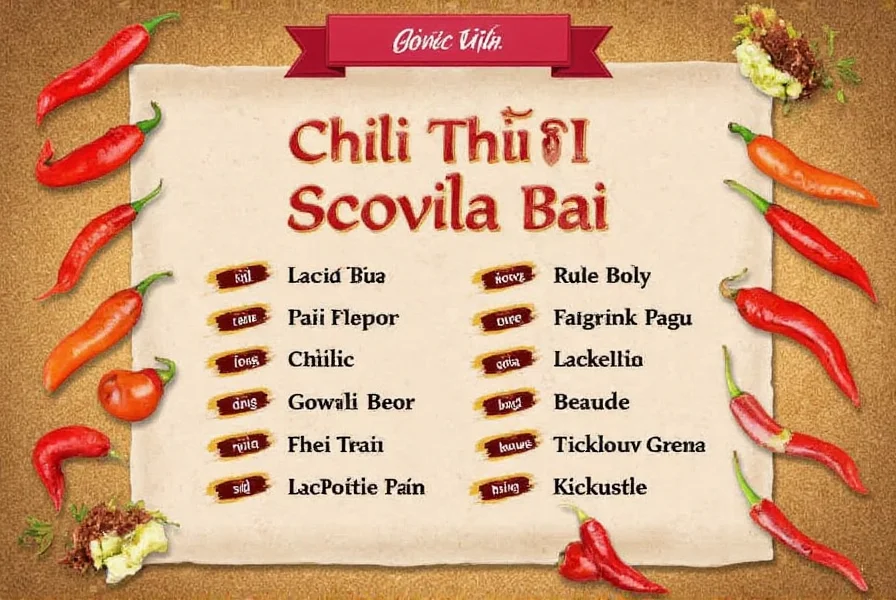The Heat of Thailand: A Spicy Guide to Thai Chili Scoville Units
Table of Contents
What Are Scoville Units?
If you've ever wondered why your mouth is on fire after taking a bite of something spicy, you're not alone. The answer lies in the Scoville scale—a measurement of how hot a chili pepper actually is. Named after its creator, Wilbur Scoville, this scale measures the concentration of capsaicin, the compound responsible for that fiery sensation.
Scoville units (SHU) are measured in a scale that ranges from 0 (no heat) to over 2 million (the hottest peppers known to man). For context, bell peppers sit at 0 SHU, while the infamous Carolina Reaper clocks in at over 2 million. But when it comes to Thai chilies, we’re dealing with some serious heat—without going full dragon mode.

The Thai Chili Hierarchy: From Mild to Molten
Thai cuisine is famous for its bold flavors and bold heat. Among the many varieties of chilies used in Thai cooking, the most common ones include the Bird’s Eye Chili, the Thai Green Chili, and the Prik Thai Daeng (Red Thai Chili). Each has its own unique Scoville range, and knowing where they fall can help you choose the right level of heat for your dish.
- Bird’s Eye Chili: 50,000 – 100,000 SHU
- Thai Green Chili: 50,000 – 100,000 SHU
- Prik Thai Daeng (Red Thai Chili): 50,000 – 100,000 SHU
So, if you thought your curry was hot, you might be in for a surprise. These chilies pack a punch that’s not for the faint of heart—but they also add a depth of flavor that makes them indispensable in Thai cooking.

Scoville Comparison Table: Thai Chilies vs. Other Hot Peppers
To give you a better idea of just how hot Thai chilies really are, here's a quick comparison table between popular chilies and their Scoville units:
| Chili Pepper | Scoville Units (SHU) |
|---|---|
| Bell Pepper | 0 |
| Jalapeño | 2,500 - 8,000 |
| Serrano | 10,000 - 25,000 |
| Tabasco | 30,000 - 50,000 |
| Bird’s Eye Chili | 50,000 - 100,000 |
| Thai Green Chili | 50,000 - 100,000 |
| Prik Thai Daeng | 50,000 - 100,000 |
| Cayenne | 30,000 - 50,000 |
| Ghost Pepper | 100,000 - 350,000 |
| Carolina Reaper | 1,400,000 - 2,200,000 |
As you can see, Thai chilies are definitely in the “medium-hot” category—hot enough to make your eyes water, but not quite at the level of the super-hots like the Ghost or Carolina Reaper. Still, even a little bit of these chilies can turn your meal into a full-blown adventure.

Cooking Tips for Handling Thai Chilies
Thai chilies are an essential part of many dishes, from curries and stir-fries to salsas and dipping sauces. However, handling them requires a little care—and a lot of respect for the heat they bring. Here are some tips to keep in mind:
- Wear gloves: Capsaicin can stick to your skin and cause irritation. Always wear gloves when handling fresh chilies.
- Use a spoon, not your fingers: If you're slicing or mincing chilies, use a spoon or knife instead of your hands to avoid direct contact.
- Don’t touch your face: Even a small amount of capsaicin can cause a burning sensation if it gets near your eyes, nose, or mouth.
- Store properly: Fresh chilies can be stored in the fridge for up to a week. Dried chilies should be kept in airtight containers in a cool, dark place.
- Balance the heat: If you want to tone down the spiciness, add a splash of coconut milk, yogurt, or a sweet element like mango or pineapple.
Remember, the goal is to enjoy the flavor and heat, not to suffer through it. Start with a small amount and adjust as needed.

Buying Guide: How to Choose the Right Thai Chili for Your Needs
Whether you're a home cook or a professional chef, choosing the right Thai chili can make all the difference in your dish. Here’s a breakdown of the most common types and what they’re best suited for:
Bird’s Eye Chili
Features: Small, thin, and extremely hot. Often used in Thai street food and hot sauces.
Advantages: Adds intense heat and a bright, tangy flavor.
Use Cases: Ideal for making spicy dips, sambals, and hot sauces.
Target Audience: Spicy food lovers and those who want to build up their tolerance.
Suitable Occasions: Street food festivals, casual dinners, or any time you want to spice things up.
Thai Green Chili
Features: Slightly milder than the Bird’s Eye, with a more herbal aroma.
Advantages: Offers a balanced heat and freshness that pairs well with seafood and vegetables.
Use Cases: Great for green curries, soups, and stir-fries.
Target Audience: Those who enjoy mild to medium heat with a fresh kick.
Suitable Occasions: Family meals, light lunches, or when you want a subtle spice boost.
Prik Thai Daeng (Red Thai Chili)
Features: Medium-sized, red, and moderately hot.
Advantages: Has a smoky, slightly sweet flavor that adds depth to dishes.
Use Cases: Perfect for red curries, braised meats, and tomato-based sauces.
Target Audience: Anyone looking for a versatile chili with a good balance of heat and flavor.
Suitable Occasions: Dinner parties, holiday meals, or whenever you want to add a bit of warmth to your plate.
When shopping for Thai chilies, look for firm, glossy, and unblemished peppers. Avoid those that are soft or have visible mold. If buying dried chilies, check for a strong aroma and no signs of moisture or pests.

Conclusion
Thai chili scoville units may not reach the extremes of the world’s hottest peppers, but they bring a unique heat that defines Thai cuisine. Whether you're a seasoned spice enthusiast or a curious beginner, understanding the Scoville scale helps you make informed choices about how much heat you want in your food.
From the fiery Bird’s Eye to the more balanced Prik Thai Daeng, each variety offers a different experience. With the right tools, techniques, and a bit of courage, you can unlock the full potential of these fiery gems and elevate your cooking to new levels of flavor and intensity.
So next time you're in the kitchen, remember: a little heat goes a long way. And if you find yourself on fire? That’s just the price of being spicy.

Key Takeaway: Thai chili scoville units typically range from 50,000 to 100,000 SHU, making them one of the most commonly used and recognizable chilies in global cuisine.











 浙公网安备
33010002000092号
浙公网安备
33010002000092号 浙B2-20120091-4
浙B2-20120091-4